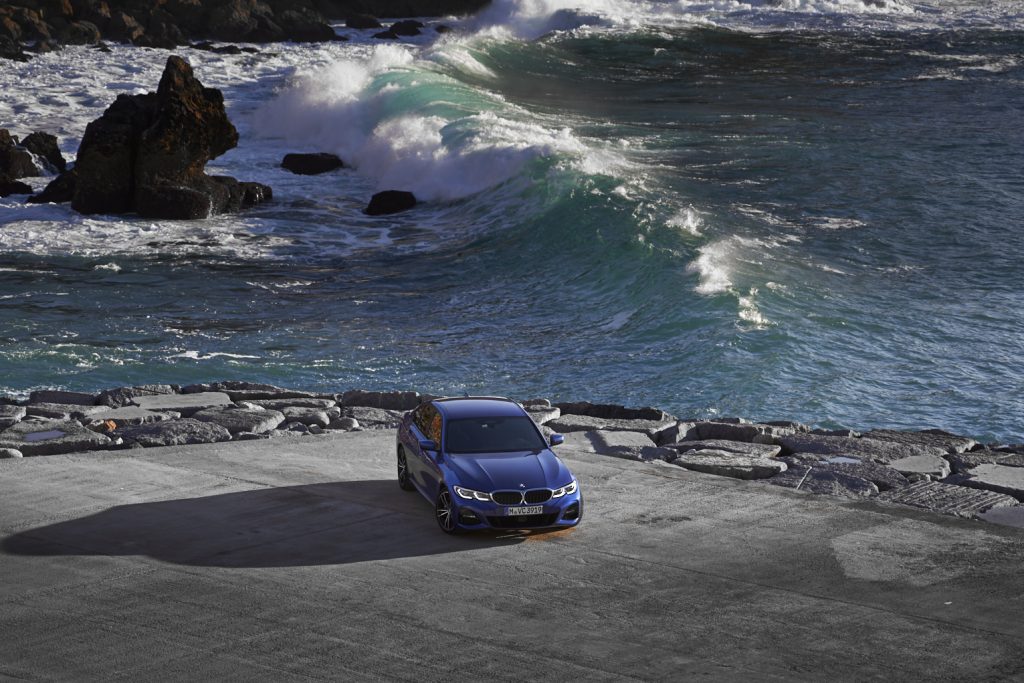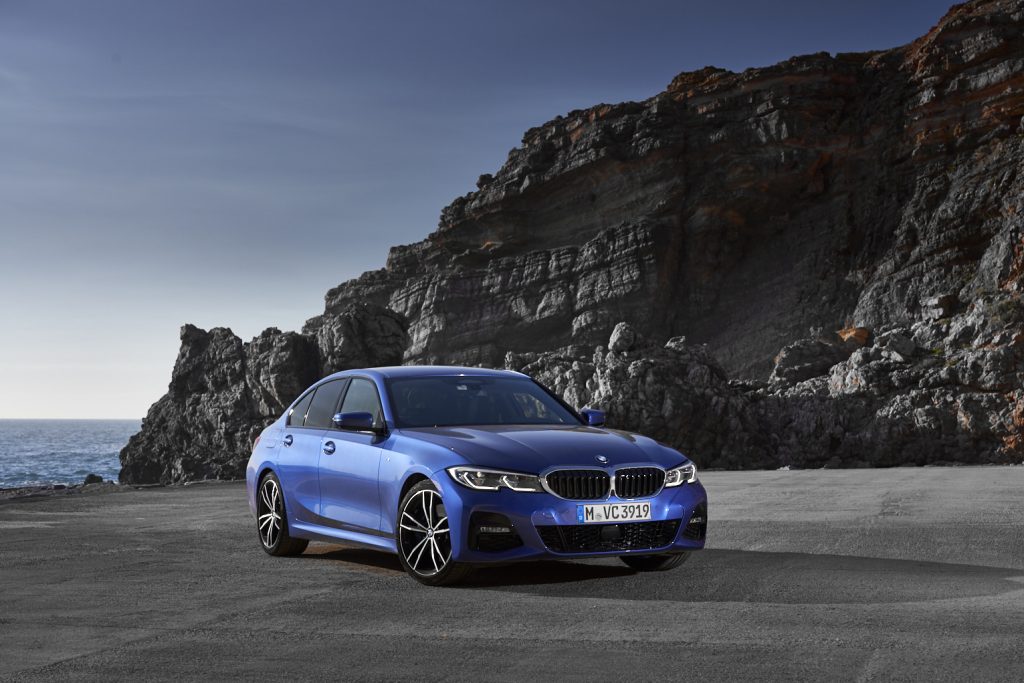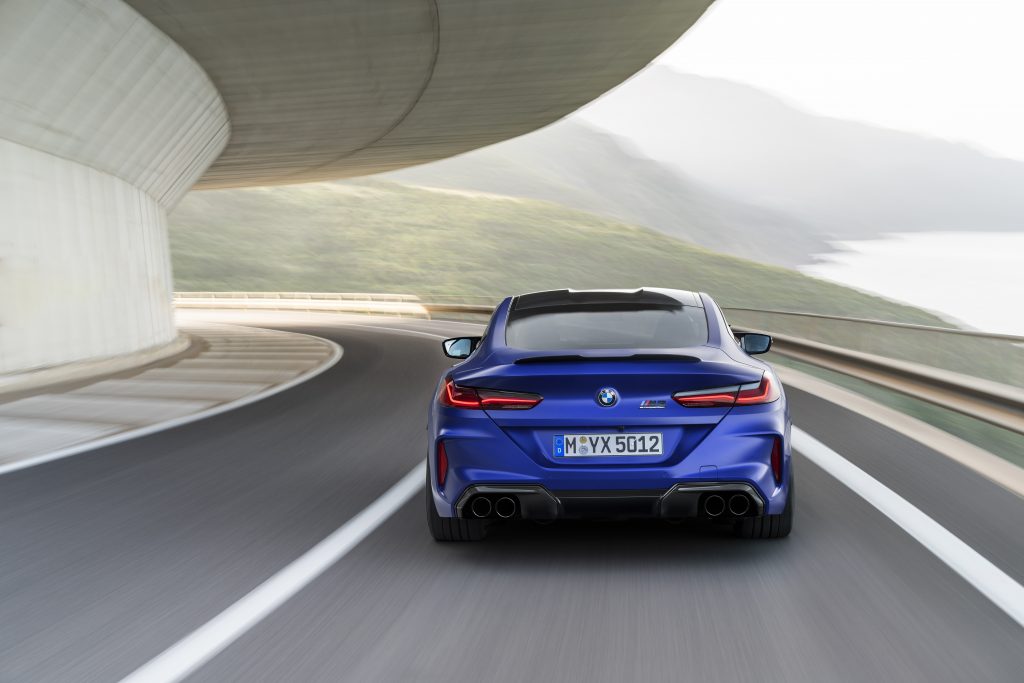Test Drive: 2019 BMW 3 Series
We take the revamped next-generation 330i through Portugal’s dramatic Algarve region

Skirting along the craggily cliffs in the next generation of BMW’s most important car right now—the 3 Series—the wild Atlantic surf pounds the rocks and picturesque coves below. In a few months, this region of Portugal will be flooded with sun-seekers splayed along its beaches, but at the moment, we have its roads to ourselves.
A gorgeous late autumn day naturally seems to invite a spirited country drive. This is the stuff drivers have clamored over for decades. And while the BMW 2002 will forever be an icon, if you’ve heard the name BMW in the last 40 years, that reputation has been built largely on the back of its 3 Series sports sedan. (Though it’s worth noting that the last generation didn’t quite live up to its “ultimate driving machine” promise.) The 2019 330i with an M Sport package that we’re driving now looks to regain that reputation—and the early impression is promising. More on that later; first, the redesign.

While engineers did a thorough reworking, the exterior design team appears to have had a lighter duty. The new aesthetic bears a very similar resemblance to the current 3 Series, albeit more contemporary. There are two key ways you can immediately spot the new car, the first being the headlights and taillights. The headlights have a new LED graphic and sharper design, while the taillights have been given a “smoky” finish. The second is on BMW’s iconic kidney grille. The grille now has a 3D effect and kinks upwards.

The interior gets a more thorough, digital reworking. The new 12.3-inch instrument binnacle has been restyled, the speedometer is no longer a sphere, and pertinent information such as your next turn is displayed right alongside it—or you can select other display view options, along with seeing that information on the new, larger head-up display, and on the navigation itself. The seats have adjustable bolster supports, the 10.3-inch infotainment screen can be operated using touch or a knob on the center console; the windows now feature acoustic glass—so those in the car hear more of the sounds they actually want to hear. The volume can even be controlled without touching a button, but rather by using gestures—like circling your index finger clockwise to raise the volume or counter-clockwise to lower it.
A new BMW digital assistant makes its debut on the 3 Series and is intended to be a voice-controlled system like Apple’s Siri or Amazon’s Alexa. It’s activated by saying, “Hey BMW,” or a greeting of your choosing. This feature is less successful, as several of the questions we asked it either didn’t register or directed me to a touch-menu. Expect BMW to continue tweaking that in the coming months.

The new, more powerful 3 Series calls on a 2.0-liter turbo-charged four-cylinder engine, good for 255 horsepower and 295 pound-feet of torque, mated exclusively to an eight-speed automatic transmission. Gone is the manual transmission option (perhaps a sign of the times), which is a small travesty for a nameplate that was synonymous with the utmost in driving enthusiasm. Select M models will still retain the manual option, but you’ll have to shell out the premium to row-your-own gears.

The steering wheel is thick and, though it may not be for everyone, swooping down a delicate ribbon of road that leads to a few switchbacks, it creates a feeling of greater control. The steering in Sport mode seems completely pinned, evenly weighted and marvelously intuitive. It’s as if you’re sending a signal to the four 19-inch Michelin Pilot Sport 4S tires optioned on this car, and the feedback’s absolutely gratifying. This is what BMW is capable of, and it’s delightfully back on the new 3 Series. The near 50:50 weight distribution in the front and rear helps, along with a stiffer chassis, and a new slick hydraulic-damper set-up.
Despite being marginally longer and wider, the new 3 weighs less than its predecessor too. Europeans will get a 320 diesel model that will be about 120 pounds less than the current generation, though the cars in the US will have a more modest weight drop.

While the 330i features the latest in BMW’s adaptive cruise control, as it works toward full autonomy, one particularly useful feature was also the Reverse Assistant. The car’s CPUs memorize the last 50 meters (164 feet) of steering input, and can do the exact reverse when selected. Driving into a tight parking garage, we activated the reverse assist, and watched as it steered the car exactly the way it came in. This will be handy for people who have awkward or tight parking spaces, it does the steering, you control the speed with the brake pedal.
The 2019 BMW 330i is expected to arrive in the US in March, the M340i will arrive likely in summer, as a 2020 model. As a bonus, we’re given a few laps on the Algarve’s famed Portimao circuit in prototypes of the M340i. The brawnier, 382 horsepower M340i adds 62 hp over the current generation car. Blasting up the circuit’s long straight we punch above the 140 mph mark before slamming down the brake pedal, the 13.7-inch front rotors and four-piston calipers go to work scrubbing speed in a hurry before the sharp right-hander of turn 1. The M340i gives us the snapshot of the performance car that it is: more power, speed, acceleration, braking force, and of course with a larger price tag to boot. While our time with this model is brief, the takeaway is similar to 330i.

The 3 Series will arrive in the US this spring, priced starting at $41,245. Once again the entry-level 3 Series is a driver’s car, borrowing from its past heritage and engineering prowess to create a sports sedan that can intuitively handle. But its got much of the latest technology on offer, ready to shepherd it into the next decade. For BMW enthusiasts, the new 3 Series is a return to form.
Images by Fabian Kirchbauer for BMW












